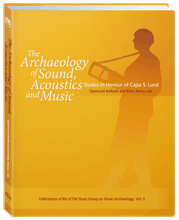TRB Drums and Rituals of Transformation
Simon Wyatt
The pottery drums of the Trichterbecher culture, TRB, span the chronological phases TRB IV
and V, circa 3350–2700 cal. BC. At the transition between these two archaeological stages there
are changes in drum form, decoration and contextual associations. Drums, whose rhythm may
be thought to mark rites of passage and other transformational ceremonies, initially had a predominant association with death, the ultimate transformation, and fire, through an association with copper artefacts.
In the later phase, the drums were more commonly deposited in settlements and were far less commonly associated with copper objects. One interpretation of this is that the drums have lost the association of transformative power, linked with death, metal production and fire. In this last stage of the southern TRB, copper production, which requires fire, is now found with a significantly smaller number of settlement drums while fire, in this later phase, is far more prevalent at burial sites.
Rhythmus est metrum fluens, metrum rhythmus clausus
Charisius circa. 400 AD




